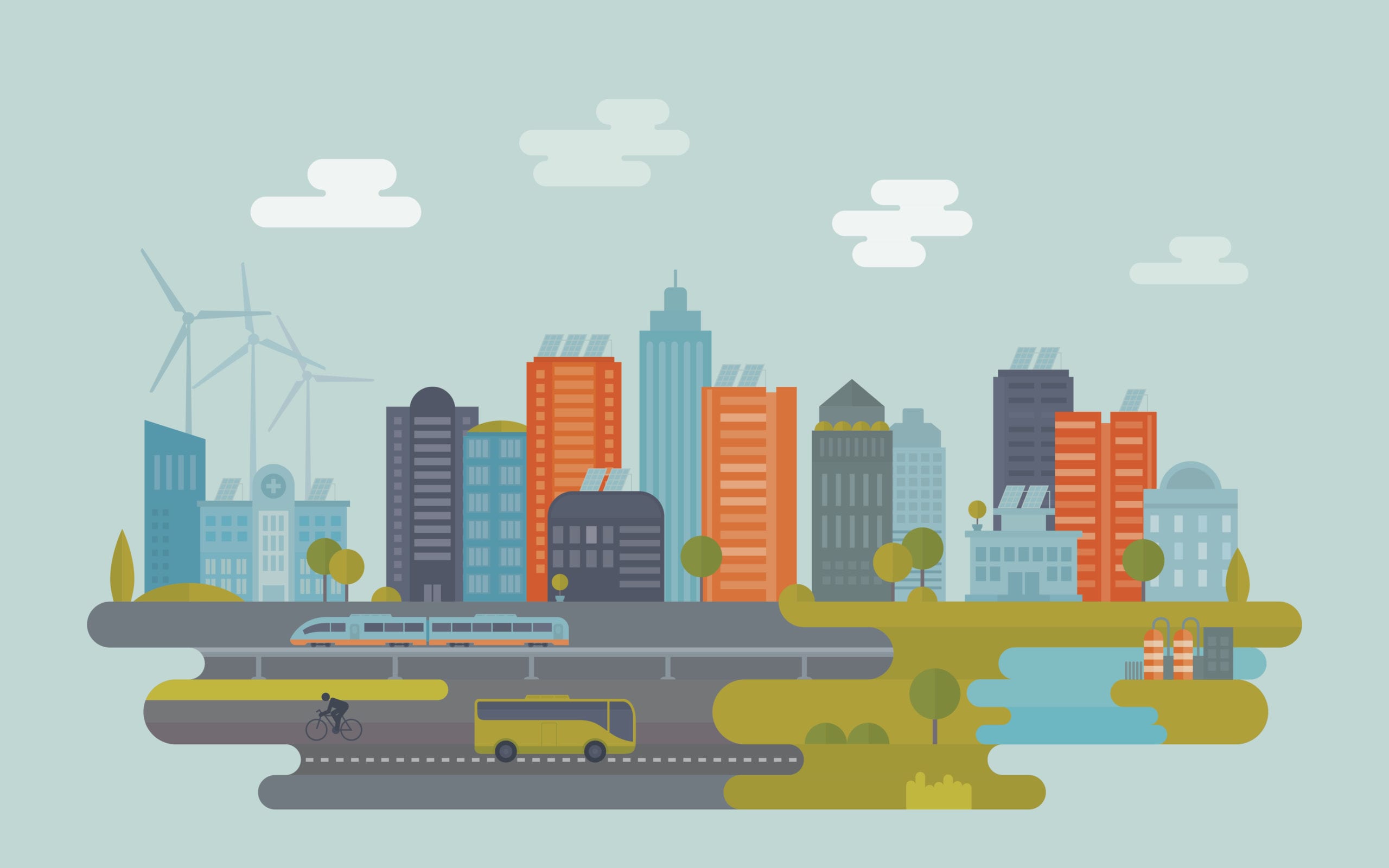About EcoDevo 101: The practice of economic development is vital to the advancement of any thriving community. It is also often misunderstood. In this series, we’ll dig deeper into the topics that underpin the profession, from public policy and mobility to technology and community planning, among many others.
In the technology world, buzz words abound, possibly none more ubiquitous than the term “smart.” It gets attached to a near infinite number of new products and services today. Smart homes. Smart TVs. Smart cars. Smart Buildings.
Smart, it seems, is all around us. (If only.)
One of the more complex, and often misunderstood, applications of the term “smart” is related to a topic that impacts all of us, Smart Cities.
If you were to ask 100 people for the definition, you’d probably get just as many variations on the answer. At Denver South, we believe the definition of a smart city is simple: It’s a community (not just cities) that employs new technologies but also new processes and partnerships to find better solutions to complicated, community scale challenges.
Smart Cities work best when not contained to a city at all, rather when those technologies and processes are put to action across jurisdictional boundaries and in collaborations between public, private, academic and non-profit entities. To be a bit more specific, Smart City approaches generally fall within one or more of the following categories:
- Mobility – This is the process of moving people and goods more efficiently into, out of, or through a community.
- Public Health – Leveraging emerging tools and partnerships to improve health at a community scale.
- Public Safety – Utilizing new tools and technologies to improve the transparency and efficiency of policing and emergency response.
- Resource and Sustainability – Approaches and projects that reduce energy consumption, improve the efficiency of consumption, and generally aid in achieving both long term environmental and economic sustainability.
- Process Improvement – Behind every public service, there lies a process. A dedication to continuous improvement and efficiency is improving how services are provided and reducing associated cost to the public.
Smart Cities, IRL
Denver South is rich with examples of these concepts in practice. Our region’s approach to advanced mobility planning and design, the Mobility Evolution Initiative, is a cross-jurisdictional and cross sector (public, private, and academic) collaboration to apply autonomous, connected, electric and shared mobility solutions for addressing commuter challenges.
Another example: The cities of Lone Tree, Centennial and Greenwood Village recently completed the installation of new “smart” adaptive traffic signals at 42 intersections along Yosemite Street last month. This milestone project improves traffic congestion by enabling lights and signals to sense vehicles in the roadway and route them more efficiently than pre-timed patterns, reducing congestion for commuters and residents that live, work, and play in Denver South.
When it comes to entertainment in Denver South, one of our greatest assets, the 17,000-seat, AEG Live-operated Fiddler’s Green amphitheater in Greenwood Village, represents yet another example of smart mobility technology deployed to improve the visitor experience. With the help of emerging smart traffic technologies, city traffic engineers have designed a traffic system capable of emptying all parking lots and garages near the venue in just 18 minutes. With tongue firmly planted in cheek, the system has been playfully dubbed, “The Flush.”
In the economic development world, quality of life and the attractiveness of a region to its current and future workforce is king. Each of these Smart City projects, while essentially invisible to residents and the commuting public in Denver South, is operating in the background, subtly improving the quality of experience for those living, working, and playing here, helping to make our region more attractive to the workforce of the future and the companies seeking to employ them.
That, is pretty “smart.”
Check Out: Here’s Why Smart Cities are Possible Today


